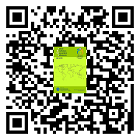Prevalence and Risk Factors for Needle Stick Injuries among Health Workers at Hospitals: A Literature Review
(1) Faculty of Medicine Usakti
(2) Faculty of Medicine Usakti
(3) Faculty of Medicine Usakti
(4)
(*) Corresponding Author
Abstract
Background: Needle Stick Injury (NSI) is the main cause of infections in health workers that are transmitted through blood, such as human immunodeficiency virus (HIV), hepatitis B and hepatitis C. The incidence of NSI exposure in the workplace in developing countries is estimated to be much higher and most cases are not even reported. by 75%. The purpose of writing this literature review is to determine the prevalence of NSI among health workers and identify risk factors for NSI so that there is increased awareness of NSI among health workers. Method: search for articles in Google Scholar, PubMed and Crossref databases using the keywords: risk factors + needle stick injury + health workers + hospital. The inclusion criteria for research subjects are healthcare workers, articles published in 2018-2023, accessible (open access), saved in portable document format (PDF) which can be downloaded for free, and in English. Results: The prevalence of NSI in each country is different, due to the many risk factors that cause NSI.. Conclusion: by understanding the risk factors for NSI, prevention efforts can be made. Hospital management can evaluate and improve existing programs and standard operating procedures, evaluate working hours and conduct training programs related to occupational health and safety.
Keywords
Full Text:
PDFReferences
Joukar F, Mansour-Ghanaei F, Naghipour M, Asgharnezhad M. Needlestick injuries among healthcare workers: Why they do not report their incidence? Iranian J Nursing Midwifery Res. 2018;23(5):382. doi:10.4103/ijnmr.IJNMR_74_17
Kebede A, Gerensea H. Prevalence of needle stick injury and its associated factors among nurses working in public hospitals of Dessie town, Northeast Ethiopia, 2016. BMC Res Notes. 2018;11(1):413. doi:10.1186/s13104-018-3529-9
Pavithran V, Murali R, Krishna M, Shamala A, Yalamalli M, Kumar Av. Knowledge, attitude, and practice of needle stick and sharps injuries among dental professionals of Bangalore, India. J Int Soc Prevent Communit Dent. 2015;5(5):406. doi:10.4103/2231-0762.165932
Alaru M, Kyiu C, Yariga FY, Osman A. Prevalence of Needle Stick Injury among Healthcare Workers in Savelugu Municipal Hospital. AJMAH. 2023;21(12):127-136. doi:10.9734/ajmah/2023/v21i12968
Mohamud RYH, Mohamed N, Doğan A, et al. Needlestick and Sharps Injuries Among Healthcare Workers at a Tertiary Care Hospital: A Retrospective Single-Center Study. RMHP. 2023;Volume 16:2281-2289. doi:10.2147/RMHP.S434315
Ghanei Gheshlagh R, Aslani M, Shabani F, Dalvand S, Parizad N. Prevalence of needlestick and sharps injuries in the healthcare workers of Iranian hospitals: an updated meta-analysis. Environ Health Prev Med. 2018;23(1):44. doi:10.1186/s12199-018-0734-z
Alam M, Qureshi HU, Aslam R, Noreen S, Khan AG, Deeba F. Prevalence and Response to Needle Stick Injuries. PJMHS. 2023;17(1):127-129. doi:10.53350/pjmhs2023171127
Sardesai R, Gaurkar S, Sardesai V, Sardesai V. Awareness of needle-stick injuries among health-care workers in a tertiary health-care center. Indian J Sex Transm Dis. 2018;39(2):107. doi:10.4103/ijstd.IJSTD_30_18
Dulon M, Stranzinger J, Wendeler D, Nienhaus A. Causes of Needlestick and Sharps Injuries When Using Devices with and without Safety Features. IJERPH. 2020;17(23):8721. doi:10.3390/ijerph17238721
Jawad SK. Magnitude of Needle Stick and Sharp Injury with Associated Factors Among Hospital Health Care Workers in Tikrit City. J Res Appl Sci Biotechnol. 2023;2(6):118-124. doi:10.55544/jrasb.2.6.16
Mengistu DA, Tolera ST. Prevalence of occupational exposure to needle-stick injury and associated factors among healthcare workers of developing countries: Systematic review. Journal of Occupational Health. 2020;62(1):e12179. doi:10.1002/1348-9585.12179
Sriram S. Study of needle stick injuries among healthcare providers: Evidence from a teaching hospital in India. J Family Med Prim Care. 2019;8(2):599. doi:10.4103/jfmpc.jfmpc_454_18
Abebe AM, Kassaw MW, Shewangashaw NE. Prevalence of needle-stick and sharp object injuries and its associated factors among staff nurses in Dessie referral hospital Amhara region, Ethiopia, 2018. BMC Res Notes. 2018;11(1):840. doi:10.1186/s13104-018-3930-4
Alshehri S, Kayal M, Alahmad Almshhad H, et al. The Incidence of Needlestick and Sharps Injuries Among Healthcare Workers in a Tertiary Care Hospital: A Cross-Sectional Study. Cureus. Published online April 25, 2023. doi:10.7759/cureus.38097
Elmi S, Babaie J, Malek M, Motazedi Z, Shahsavarinia K. Occupational exposures to needle stick injuries among health care staff; a review study. J Anal Res Clin Med. 2018;6(1):1-6. doi:10.15171/jarcm.2018.001
Debelu D, Mengistu DA, Tolera ST, Aschalew A, Deriba W. Occupational-Related Injuries and Associated Risk Factors Among Healthcare Workers Working in Developing Countries: A Systematic Review. Health Services Research and Managerial Epidemiology. 2023;10:23333928231192834. doi:10.1177/23333928231192834
Cui Z, Zhu J, Zhang X, Wang B, Li X. Sharp injuries: a cross-sectional study among health care workers in a provincial teaching hospital in China. Environ Health Prev Med. 2018;23(1):2. doi:10.1186/s12199-017-0691-y
Mousavi SM, Yazdanirad S, Althubiti S, Majdabadi MA, Najarian F, Sepehr P. Determination and prioritization of factors affecting the occurrence of needle stick injuries among healthcare workers using techniques of Delphi and fuzzy analytical hierarchy process (FAHP). BMC Public Health. 2023;23(1):2009. doi:10.1186/s12889-023-16969-x
Gabr HM, El-Badry AS, Younis FE. Risk Factors Associated with Needlestick Injuries among Health Care Workers in Menoufia Governorate, Egypt. Int J Occup Environ Med. 2018;9(2):63-68. doi:10.15171/ijoem.2018.1156
Alfulayw KH, Al-Otaibi ST, Alqahtani HA. Factors associated with needlestick injuries among healthcare workers: implications for prevention. BMC Health Serv Res. 2021;21(1):1074. doi:10.1186/s12913-021-07110-y
Fadil RA, Abdelmutalab NA, Abdelhafeez SA, et al. Pattern and risk factors of sharp object injuries among health care workers in two tertiary hospitals, Al Taif-Kingdom of Saudi Arabia 2016–2018. Saudi Journal of Biological Sciences. 2021;28(11):6582-6585. doi:10.1016/j.sjbs.2021.07.031
Reda S, Gebrehiwot M, Lingerew M, et al. Occupational blood exposure beyond needle stick injuries: hospital-based cross-sectional study among healthcare workers in governmental hospitals of Northern Ethiopia. BMC Health Serv Res. 2021;21(1):1136. doi:10.1186/s12913-021-07167-9
Hassanipour S, Sepandi M, Tavakkol R, et al. Epidemiology and risk factors of needlestick injuries among healthcare workers in Iran: a systematic reviews and meta-analysis. Environ Health Prev Med. 2021;26(1):43. doi:10.1186/s12199-021-00965-x
Sepandi M, Alimohamadi Y, Afrashteh S, Rashti R. Occupational needle stick injuries and related factors among healthcare workers in military hospitals in Tehran. Nursing Open. 2023;10(8):5193-5201. doi:10.1002/nop2.1755
Fathizadeh H, Alirezaie Z, Saeed F, Saeed B, Gharibi Z, Biojmajd AR. Prevalence of needle stick and its related factors in Iranian health worker: an updated systematic review and meta-analysis. J Glob Health. 2023;13:04104. doi:10.7189/jogh.13.04104
Hosseinipalangi Z, Golmohammadi Z, Ghashghaee A, et al. Global, regional and national incidence and causes of needlestick injuries: a systematic review and meta-analysis. East Mediterr Health J. 2022;28(3):233-241. doi:10.26719/emhj.22.031
Article Metrics
Abstract view : 532 timesPDF - 503 times
DOI: https://doi.org/10.26714/jkmi.19.1.2024.11-20
Refbacks
- There are currently no refbacks.
Copyright (c) 2024 Jurnal Kesehatan Masyarakat Indonesia

This work is licensed under a Creative Commons Attribution-NonCommercial-NoDerivatives 4.0 International License.
------------------------------------------------------------------------------------------------------------------------------------------------------------------------------------
 | Jurnal Kesehatan Masyarakat Indonesia ISSN 1693-3443 (print) | 2613-9219 (online) |
Jurnal Kesehatan Masyarakat Indonesia is licensed under a Creative Commons Attribution-NonCommercial-NoDerivatives 4.0 International License.












